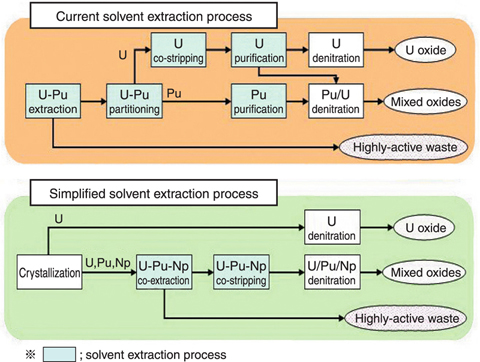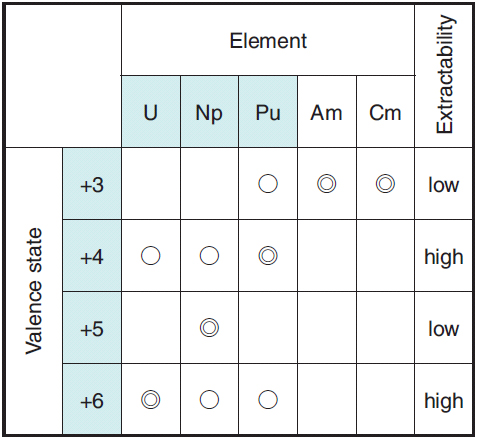
Fig.1-25 Comparison of current extraction process and simplified extraction process
Table 1-4 Valence states and their extractabilities

A simplified solvent extraction process to recover Uranium (U), Plutonium (Pu) and Neptunium (Np) collectively is one of the advanced aqueous reprocessing technologies being developed (Fig.1-25). Utilizing a crystallization process, the nuclear fuel material to be treated in the simplified solvent extraction process is quantitatively less than that in the conventional reprocessing process. Moreover, the construction of the extraction process where Pu is made to co-exist with U etc. in all reprocessing steps (i.e. Pu is never isolated alone) is made possible by the deletion of the U/Pu distribution process. It is expected that the new process will generate less waste, reduce costs, and enhance nuclear proliferation resistance.
The extractability of actinide elements to tributyl phosphate (TBP) mainly depends on their valence state (Table 1-4). In the current reprocessing process, U and Pu are extracted by TBP in their extractable valence states, U(VI) and Pu(IV). Then, Pu is reduced by a reducing reagent from Pu(IV) to Pu(III) and is stripped from the TBP phase while U(VI) remains in the TBP phase. Finally, U(VI) is stripped from the TBP phase by dilute nitric acid. In the advanced aqueous process, U(VI) and Pu(IV) in the TBP phase are collectively stripped by diluted nitric acid because a certain part of U is separated beforehand utilizing U crystallization. As for Np, it can exist as extractable Np(IV), Np(VI) or inextractable Np(V) in the solvent extraction system, their behavior can be controlled by their valence state adjustment. The use of redox reagent, however, makes the adjustment of the chemical condition of the process complex, increasing the number of reagents to be used. We are studying the control of Np valence state simply by changing the concentration of nitric acid, for U-Pu-Np co-extraction process development.
The experimental studies on the U-Pu-Np co-extraction process are being done at the Chemical Processing Facility (CPF). The CPF type centrifugal contactor we designed was used as a counter current extraction device. The demonstrations have shown that U, Pu and Np can be collectively extracted and recovered by simple control of valence state through adjustment of the nitric acid concentration.